
|
|
|
|
 |
|
Home Site Search Contact Us Subscribe
|
|
|
|
Healing Gardens: Samaritan Health Services System by Macdonald Environmental Planning
Oregon: A master planning approach to landscape design serves up a system of healthful opportunities. by Jack Rubinger July 27, 2004 What
do most architects think of when they hear the term healing environment? Is it innovative
technology, buildings, and facilities planning? Or is it water features,
artwork, and views of lush landscaping? The answer should be both, according to
Portland, Oregon-based landscape architecture firm Macdonald Environmental
Planning (MEP) when challenged with broadening the definition of a healing
environment and communicating this expanded view with the Samaritan Health
Services system. The plan encompassed five hospitals and two senior care
facilities in the Willamette Valley and along the Oregon coast. Typically,
healthcare administrators and facilities managers involve landscape architects
late in the decision-making process – often after major planning decisions have
been made. The result? Missed opportunities: Views of parking and maintenance
areas from patient rooms, entrances made up of asphalt, areas of un-mowed and
un-irrigated grass, and a lack of uniform signage. By themselves, these can be
minor issues that don’t hold much weight. Taken collectively, these can add up
to environments that can actually be detrimental to the well-being of patients,
staff members, and visitors. In essence, the environment can harm instead of
heal. “We
proposed taking a holistic approach to healing environments based on an overall
master plan. The plan identified many potential projects and elements
throughout the system that could be implemented as time and budget allowed,”
explains MEP principal Laurel Macdonald, ASLA. “This master plan effort
provided a workable, multi-year tool for Samaritan. It also created
institutional support for healing environment options throughout the system.” Research and site visits showed that there was no
simple solution to building or planning for healing environments due to the
different needs of each facility. A number of the facilities involved in the
master planning process were recently combined under the Samaritan umbrella.
The history of diverse ownership, coupled with regional variations, made each
facility a unique situation. For example, Good Samaritan Regional Medical
Center in Corvallis serves a three-county area of 250,000 people with 1,500
employees. In comparison, Samaritan Pacific Communities in Newport has 380
employees and is situated on the Oregon coast, a radically different social and
physical environment. While they are now all members of the Samaritan system,
they remain independent of each other in many ways. The goal wasn’t to give
each facility a general aesthetic; it was important to maintain each facility’s
unique regional character. This is where the healing environments philosophy
came into play. “We
interact with many medical facilities, but mostly on a project-specific basis,”
Macdonald adds. “It dawned on us that something in the way the campuses were
coming together was missing. There are some great prototypes of healing
gardens, but if you just create one garden without addressing the entire
campus, you limit the potential to provide multiple opportunities and
experiences for a variety of users. It was clear that we needed to be broader in
how we implement areas for healing.” The
reality is that everyone in a healthcare system – administrators, staff, and
patients – has a different idea about how an environment can contribute to
healing. The specifics of facilities, priorities, and budgets all fall into
place when the system administration and staff buy into and proceed with a
shared vision. Providing
participation at all levels at all seven facilities was accomplished through a
combination of communications tools including videoconferencing, web/e-mail
lists, and face-to-face meetings. Visuals such as graphics, photos, and
drawings helped participants explore and understand the possibilities that
healing environments offer. Surveys yielded answers to questions about favorite
and least favorite areas at each facility, site navigation, specific types of
activities that may take place outdoors, and opportunities for privacy and
respite for patients, visitors, and staff. “By
starting out with a discussion about how we treat one another as part of a
healing environment as co-workers, visitors, and patients it became clear that
not everything has to cost money,” explains Julie Manning, VP of Development
and Community Relations, Samaritan Health Services. “Ultimately, MEP
contributed a philosophy about how we want people to feel in our facilities.
Healthcare is a people intensive, hands-on business. These projects should
enhance what people are about.” Upfront
planning is a relatively small investment that will have a huge payoff on
morale, productivity, and overall environmental quality. The planning will help
in the pursuit of alternate funding sources. Progressive hospital leaders,
always looking for ways to increase quality while maintaining budgets,
understand this and will support funding for construction and maintenance when
they see the innate value. The system-wide healing environments master plan
identifies a wide range of cost benefits to make this case including: ·
Less staff turnover and training due to reduction of stress ·
Ability to recruit more qualified staff due to healthy environment ·
Reduction of inpatient stays and recovery time increases the bottom line
due to lower patient care costs and less patient transfers ·
Ability to compete with other hospitals and systems + increased amenities
= increased marketability ·
Simple items like irrigation control systems, appropriate plants, and
low-maintenance materials have an initial cost, but can save money in the long
run by reducing maintenance ·
A beautiful, well-maintained site gains more support from the community,
potential donors, and funders. Macdonald
Environmental Planning, p.c. was established in 1982. MEP is a design-oriented firm involved in a wide
variety of landscape architecture and master planning projects. The firm
specializes in medical facility design and planning, housing, and sustainable
design. Jack Rubinger specializes in marketing for the design/architecture/construction
industry; contact: 503-469-9209. |
(click on pictures to enlarge) 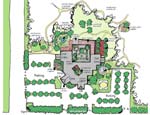 (Macdonald Environmental Planning (MEP)) This Healing Environments map highlights the potential types of healing environments that can be incorporated into any campus.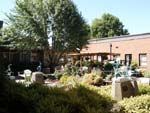 (Macdonald Environmental Planning) Lebanon Community Hospital, Lebanon, OR: atrium courtyard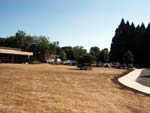 (Macdonald Environmental Planning) Lebanon Community Hospital: view from some patient rooms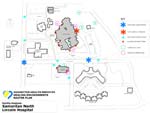 (Macdonald Environmental Planning) Example of a Facility Analysis map: These maps graphically depict current site assets and potential opportunities.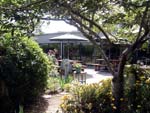 (Macdonald Environmental Planning) Samaritan North Lincoln Hospital: new central courtyard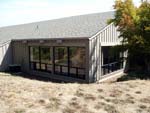 (Macdonald Environmental Planning) Samaritan North Lincoln Hospital: view from patient waiting area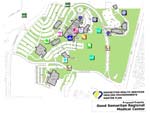 (Macdonald Environmental Planning) Example of a Facility Improvement Map: These maps provide a visual planning tool for systemwide planners and individual facilities; their visual nature makes it easy to compare facilities, and create a cohesive, balanced, systemwide picture. (Macdonald Environmental Planning) Heart of the Valley Corvallis: existing main entrance (Macdonald Environmental Planning) Heart of the Valley Corvallis: existing service entry/staff relaxation space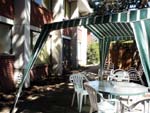 (Macdonald Environmental Planning) Heart of the Valley Corvallis: exiting respite garden (Macdonald Environmental Planning) Samaritan Pacific Communities Hospital: Newport, OR: existing landscaping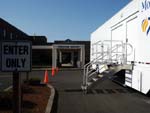 (Macdonald Environmental Planning) Samaritan Pacific Communities Hospital: mobile MRI blocking entrance drive |
© 2004 ArchNewsNow.com